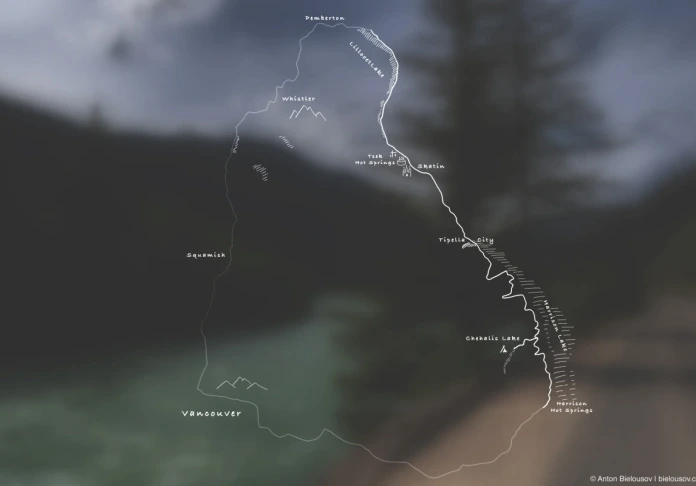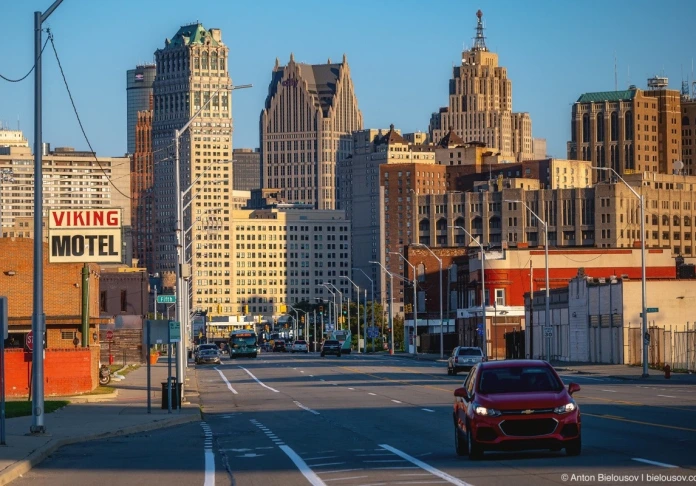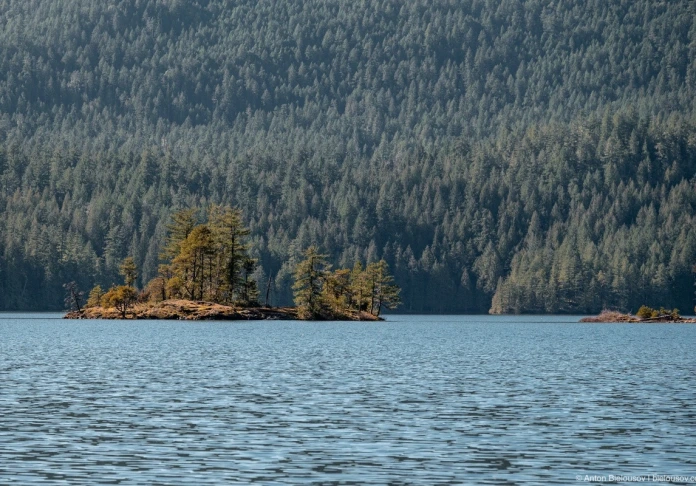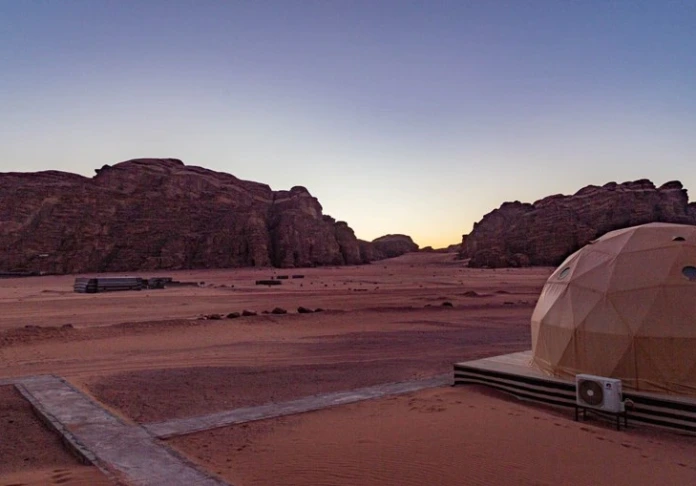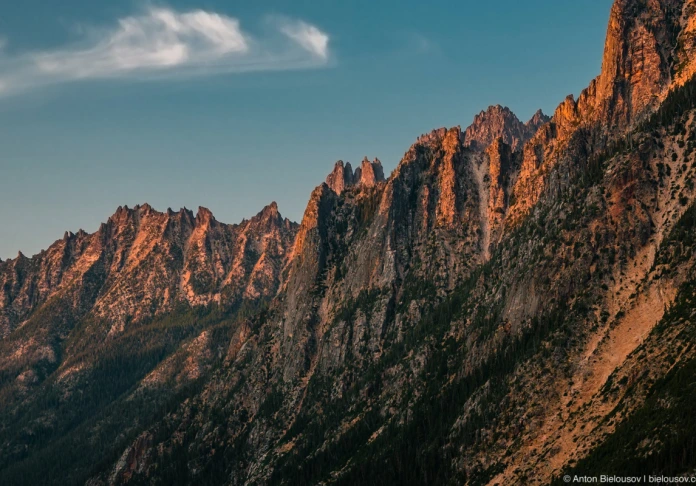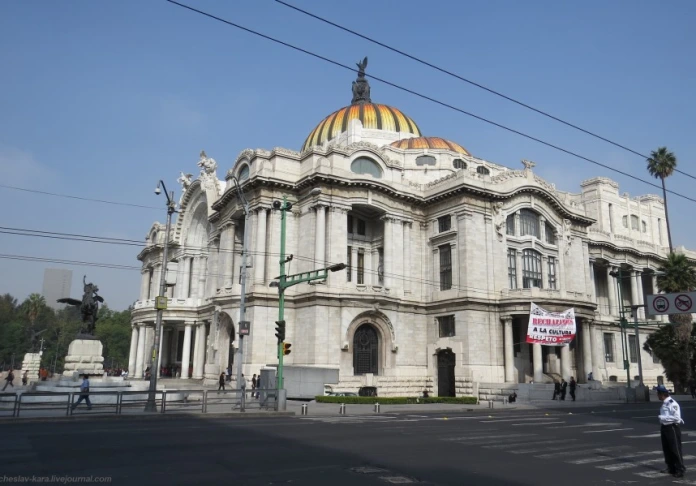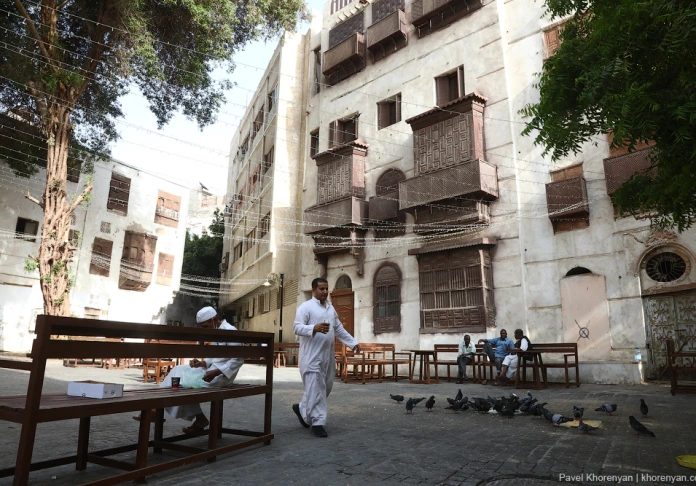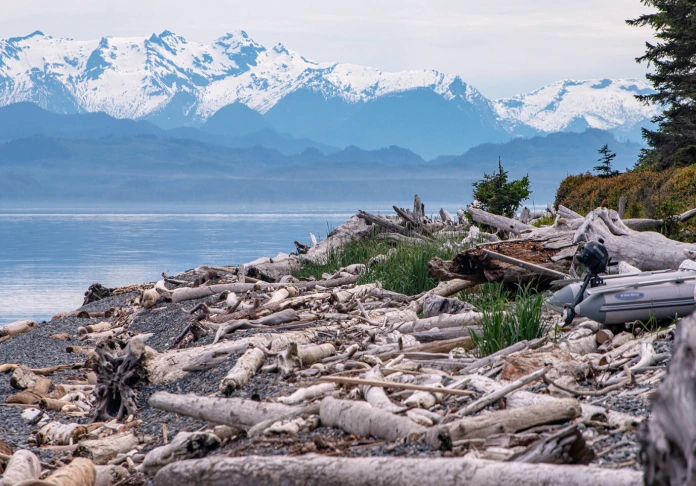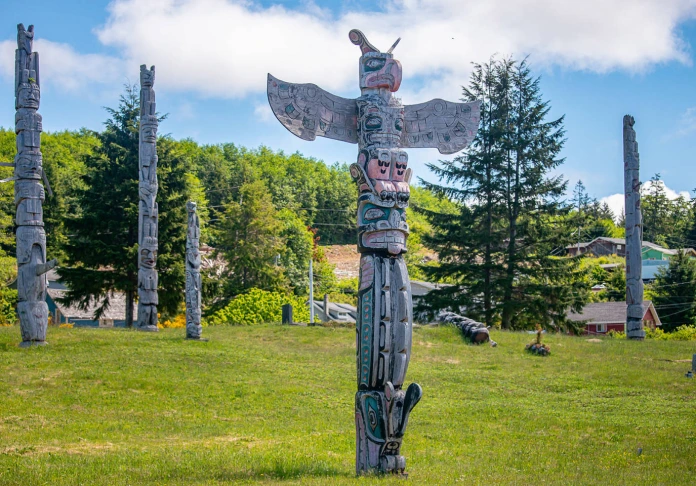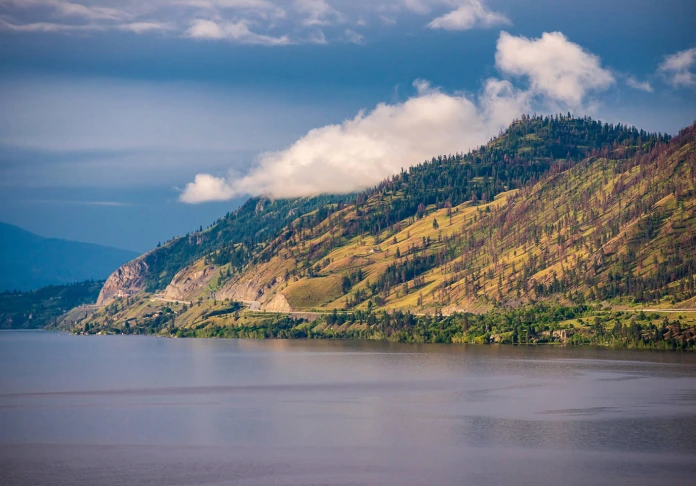Vancouver, BC, Canada
Today I will talk about Canadian travel! In one day, we managed to see quite a lot. In a nutshell, we left at 6 am from Everett to 8 hours crossed the Canadian border, and at 10 pm we crossed it again, but in the direction of the United States already :)
The first point of the route was a mountain mt. Grouse (it is located north of Vancouver, 15 minutes). Lake View Capilano Lake.
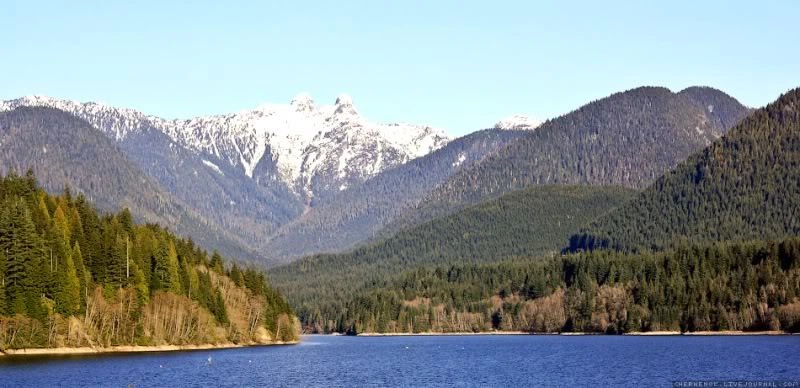
Next, we plan was ascending Mount Grouse. But on the very hill we climbed, and stopped at the bottom of the lift. The area around the park was fenced and there is a reserve behind the fence (in fact, it is a statue of the reserve).
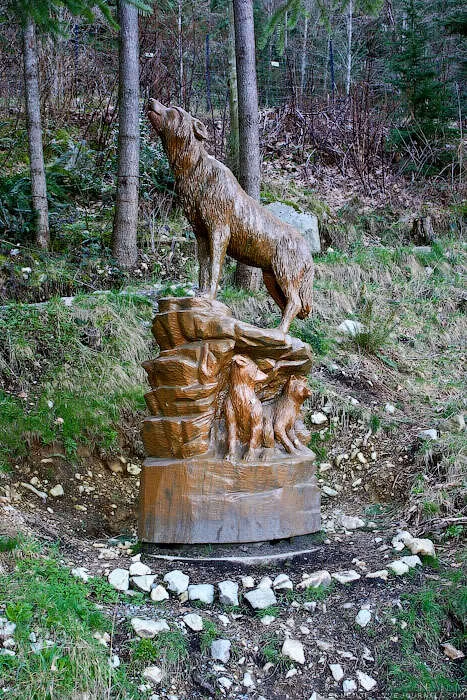
This handsome wolf was on the other side of the fence in the reserve. And thank God :)
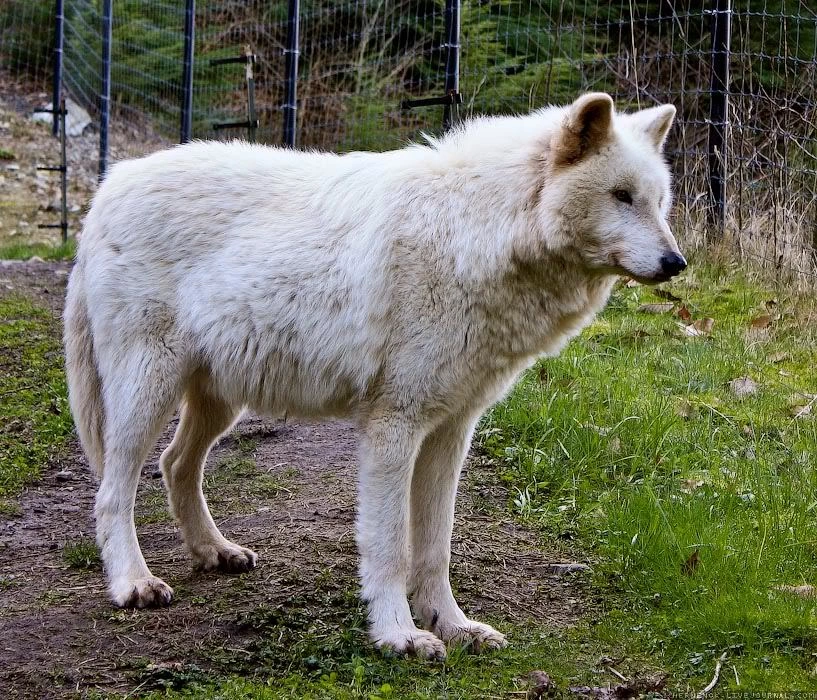
I confess that I have never heard the howling wolves live. This is a bloodcurdling howl. Even knowing that the wolf is at the high-voltage fence and simple netting, chustvuesh a little uncomfortable. But it was worth it!
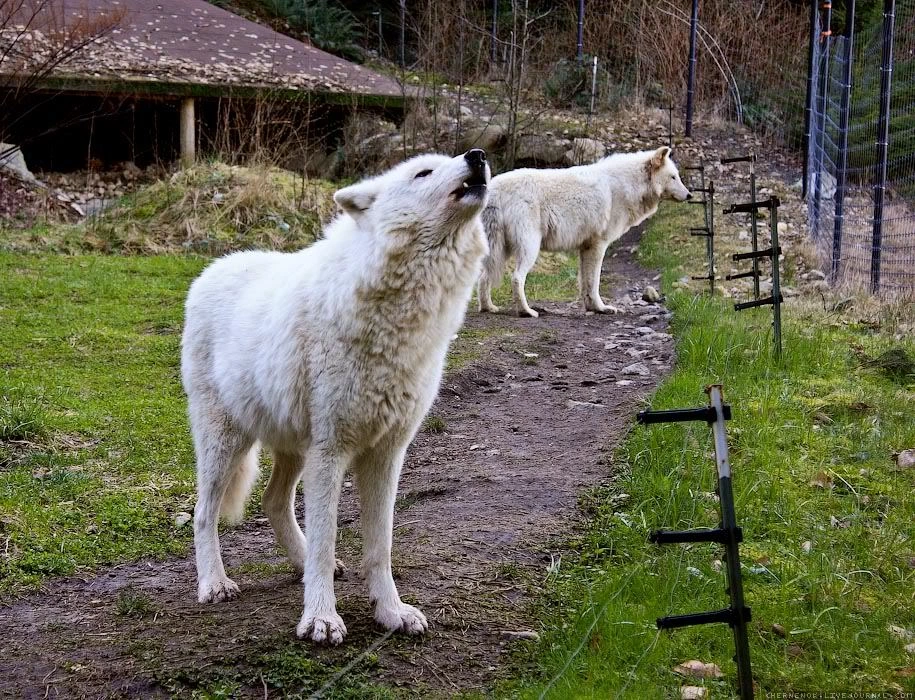
As I said, at the top of the mountain you can climb on this lift. Given the fact that we had a little time, and the price rise per person - $ 50, we went to the side of the Capilano Bridge.
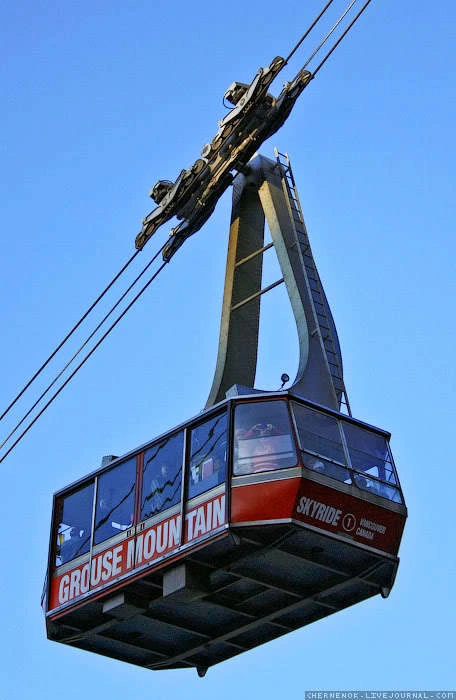
At the bottom of the lake Capilano (it was shown in the first photo) there is a dam.
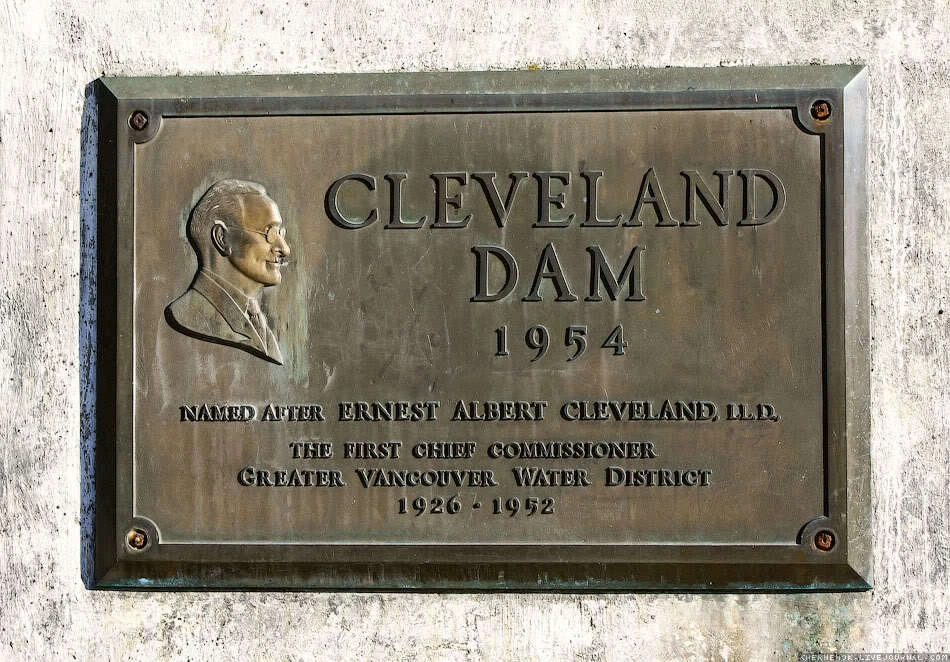
This dam itself. The difference in height of about 50 meters. After the dam the water rushes on and after driving a bit along the river, we were in Park Capilano Suspension Bridge.
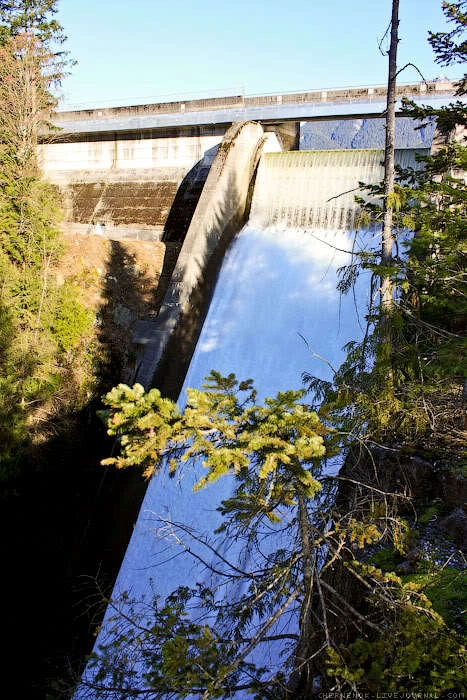
One of the most popular attractions in Vancouver - Capilano Suspension Bridge. The name of the bridge, as well as the park in which it is derived from the name of the leader of the local Indian tribe Squamish.
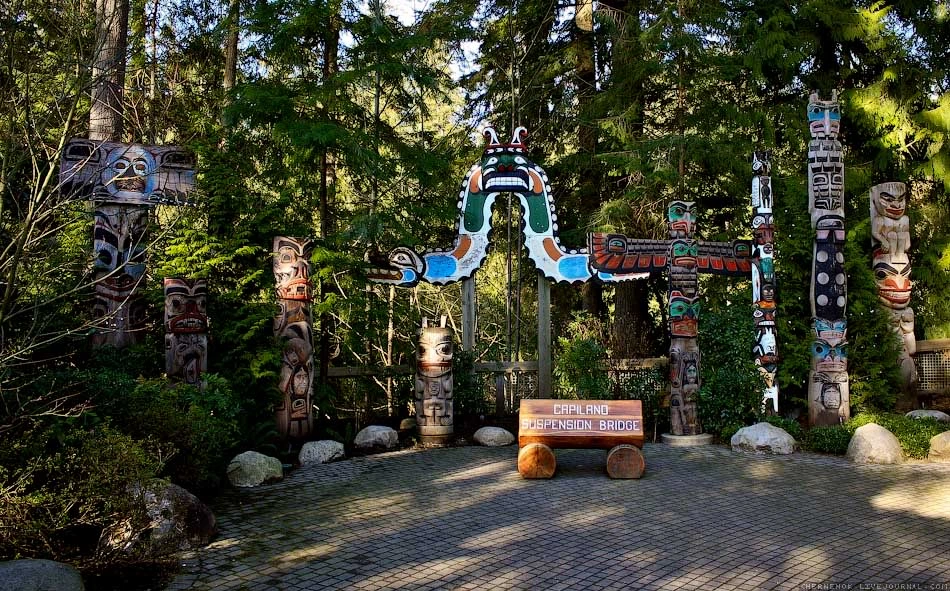
Traditionally we went to the gift shop, where we bought delicious maple syrup and other souvenirs!
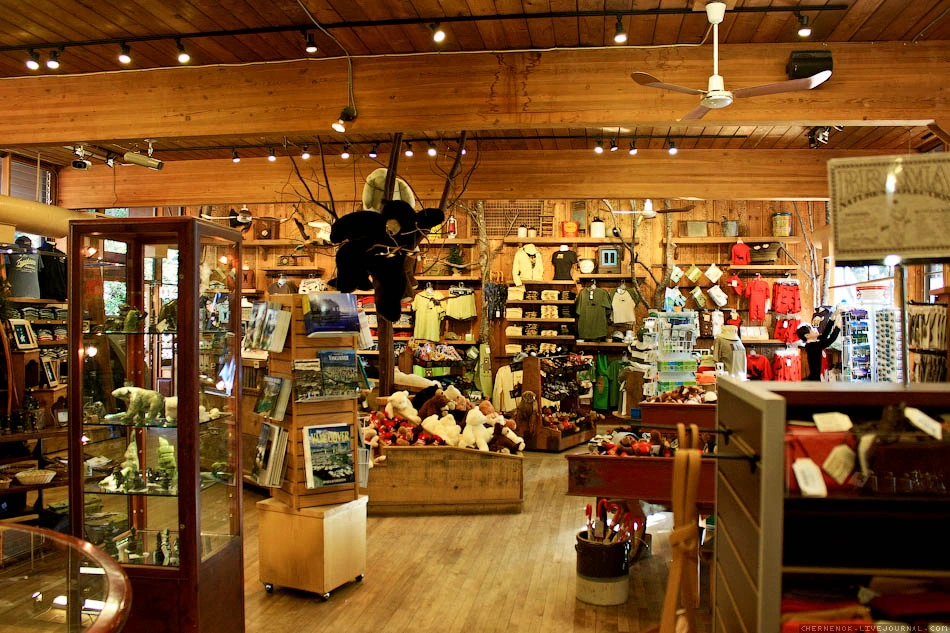
And here is the 137-meter pedestrian suspension bridge, it connects the two banks of deep (70 m!) Capilano River canyon. George Grant Mackay, a Scottish civil engineer, built it in 1889. Used for this hemp rope and cedar planks.
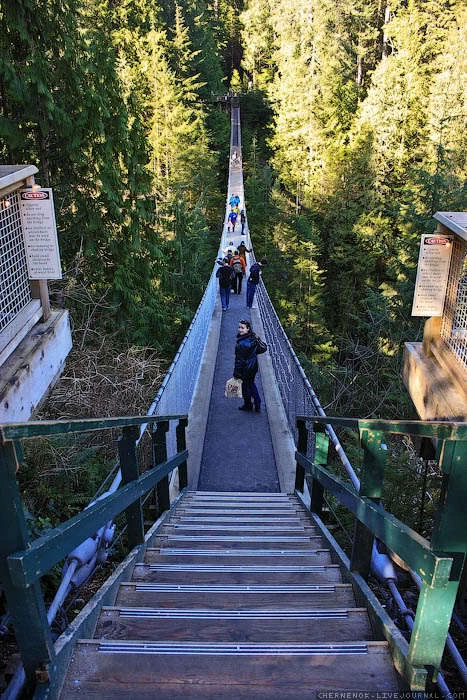
Among the gifts was purchased and the candy in the form of a maple leaf - a symbol of Canada (its use due to the presence of a significant number of maples in Canada. Maple traditionally represents a significant economic resource. In addition to supply a large number of forest resources in exporting countries involved are collected every year maple sugar) !
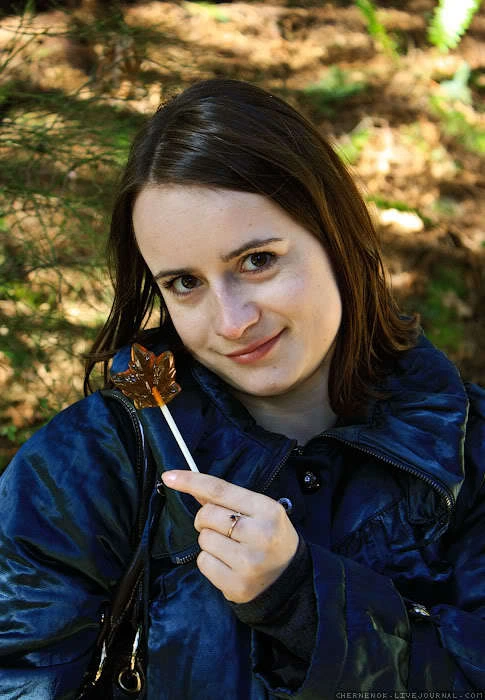
In the park Capilano, on the other side of the bridge, plenty of hiking paths that lead directly to the water and rise to a height of 10-15 meters from the ground .... But that is another attraction - "According to the tops of trees" (Treetops).
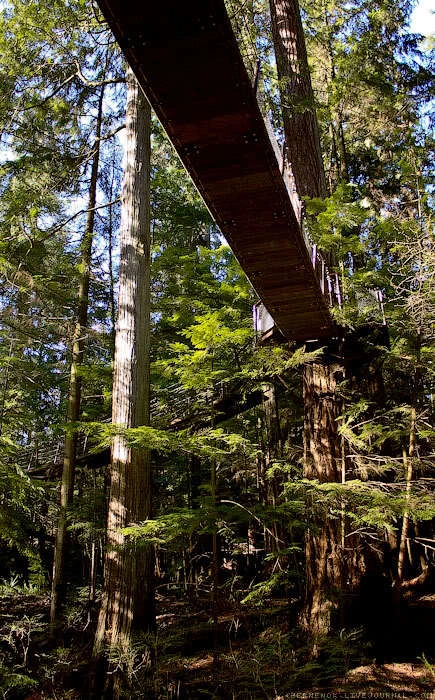
On the balcony at a height of one meter 10-15 had this little weather station.
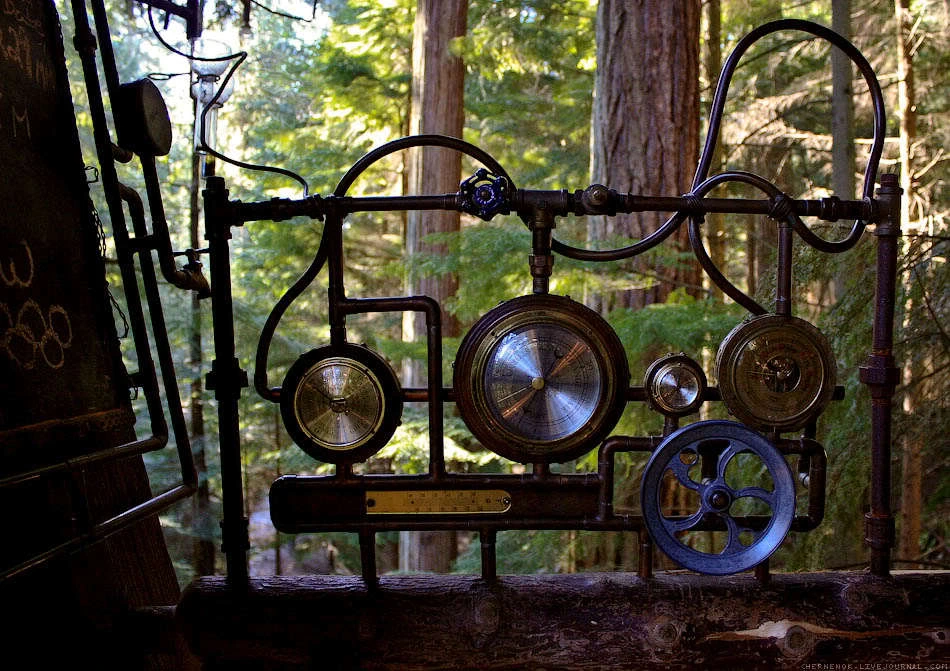
Track interrupted by a small observation balconies that offer beautiful views of the canyon and the bridge hanging over the 70-meter chasm.
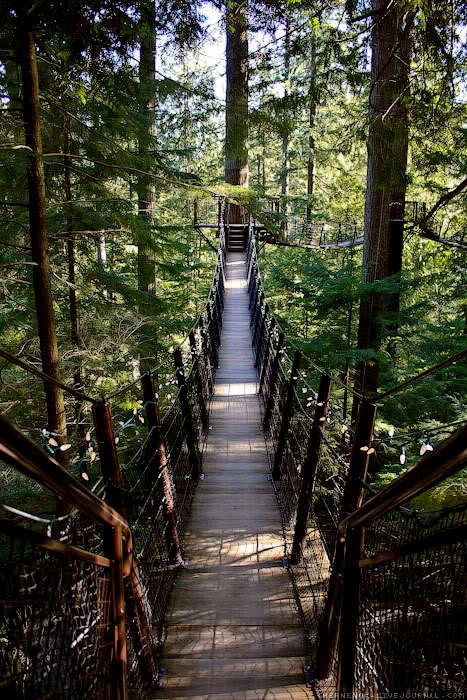
The friendly staff at the park.
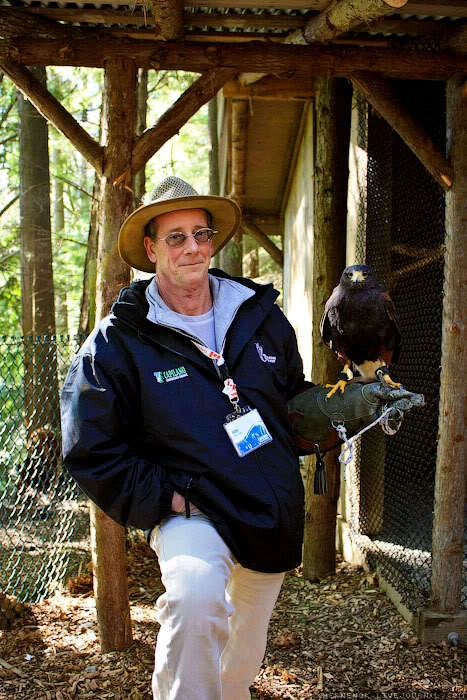
And it is less friendly, but more nimble resident park :)
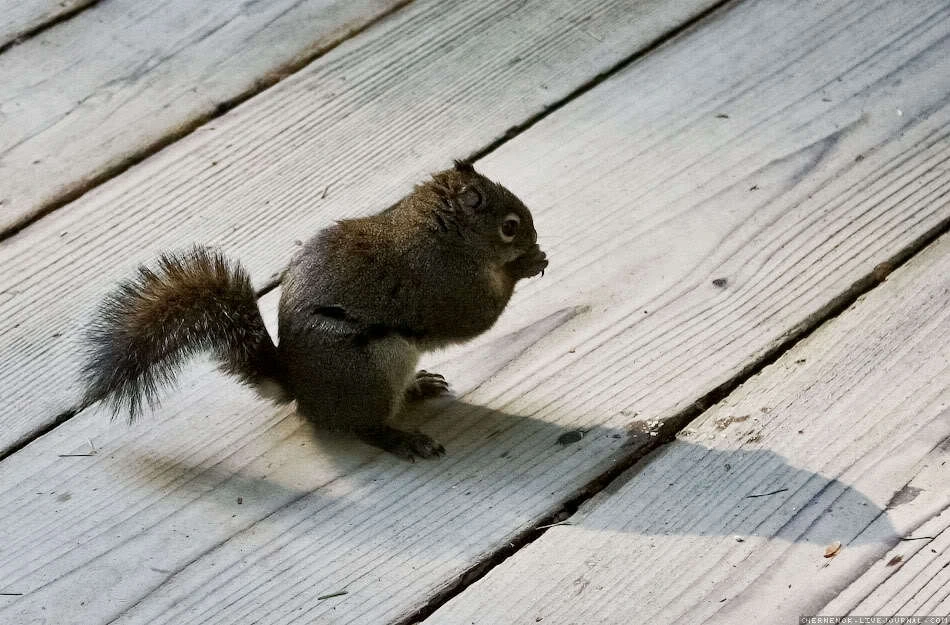
Capilano walk in the park, we went to the park Stanley. North Vancouver Vancouver is connected to several bridges. But the biggest bridge in Vancouver - undoubtedly suspension bridge Lions Gate length of 1823 m, which connects the shore of the Gulf Berrard. It got its name in honor of Lion Mountain, located in the northern part of the city, as well as by two lions adorning the entrance to the bridge (which is on giving should protect city). It is hard to imagine, but this elegant construction extends from 60 to 70 thousand vehicles per day, and its height is enough to pass under it could deepwater cruise ships and container ships. Overall, the Vancouver area is 20 bridges, three of which - drawbridges.
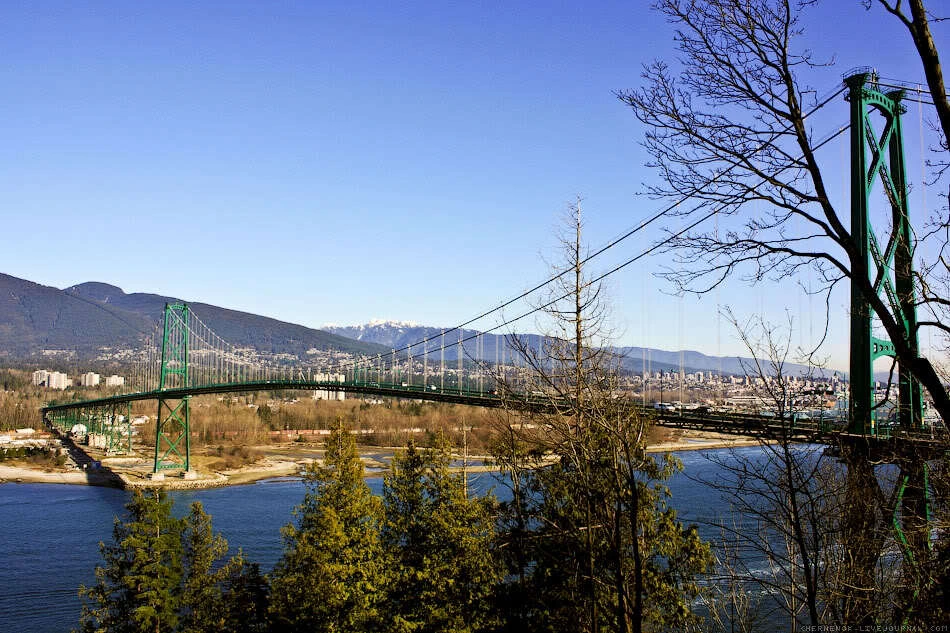
As I said before, after North Vancouver, moved by Lions Gate Bridge, we were in Stanley Park! The park is located on the peninsula opposite the port of North Vancouver. This is one of the largest urban parks in North America. By area, it is second only to Central Park in New York. View from Stanley Park'a toward the Pacific Ocean.

As in America, the private sector in water / air / car very well developed!
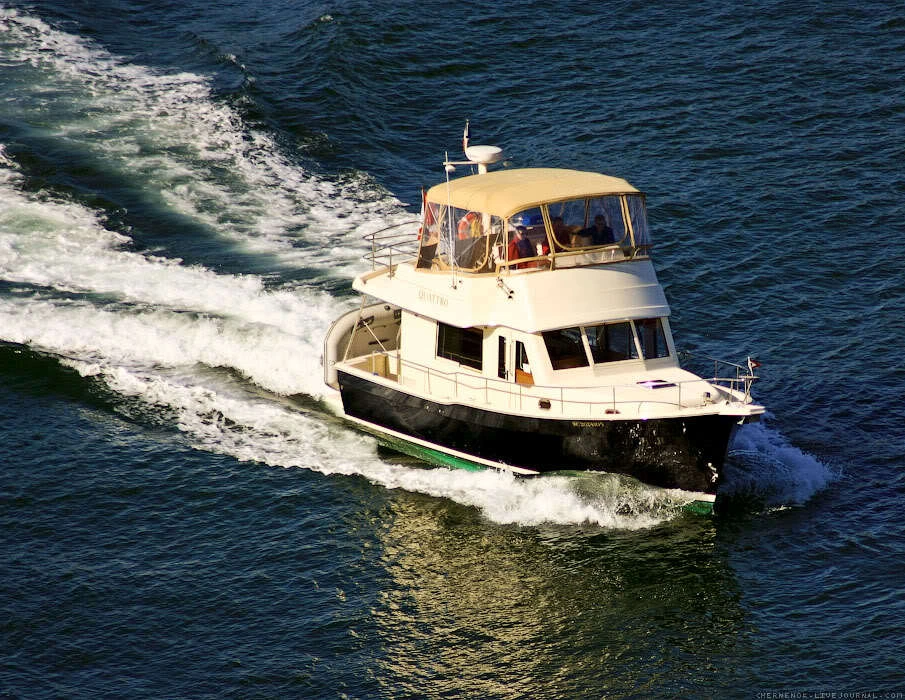
Bridge Lions Gate Bridge was built and paid for the brewing company Guinness, to give people access to the North Shore, where he owned and belongs to the family of Guiness.
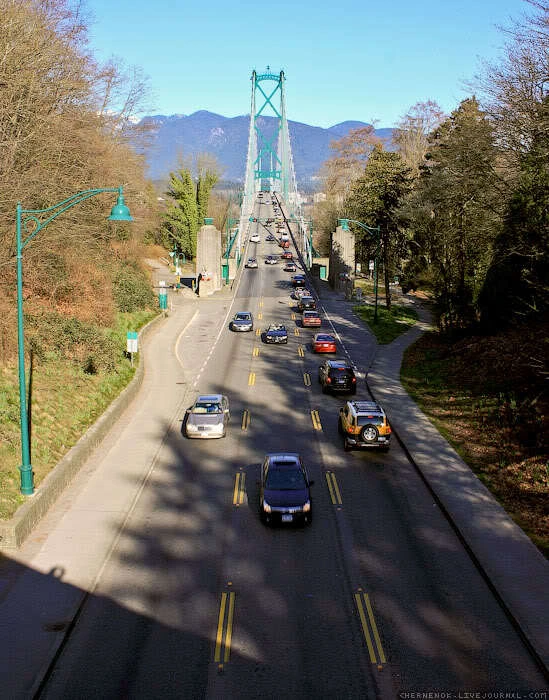
In a clearing couple totem poles that adorn today Parks Canada. These poles are usually very recent origin. However, they retain the style and symbolism that has developed among the tribes of North American Indians for centuries. On, the image on the totem pole, a knowledgeable person can read the whole pedigree of the author of this monument. Every object on a pole - a symbolic representation of one of the ancestors, who were related and, accordingly, under the auspices of the beast, bird, or some mythical creatures. "Read" should be top - down from the present, the creator of the totem pole - to the past.
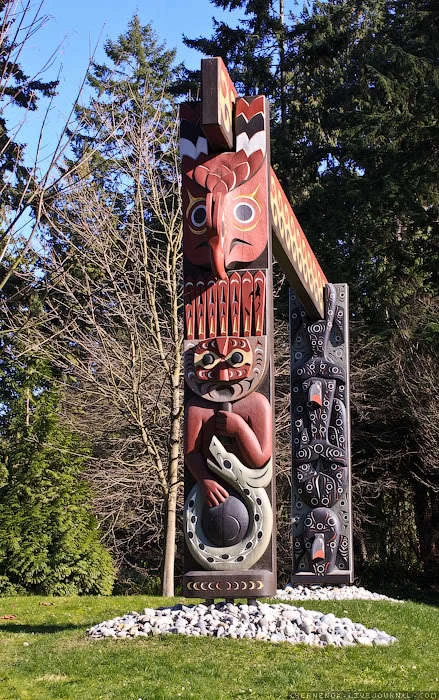
In 1889, Governor General of Canada, Lord Stanley announced the peninsula "green zone" "for the use and enjoyment of people of every color, religion and customs." The park is laid miles of pedestrian and bicycle paths. Only on the perimeter, along the coast stretches asphalt road for cars, bicycles and walking more than 8 km. Here roam freely deer, skunks, squirrels rushing thousands hoping to seize the remains of some bread, ducks and geese arrange noisy showdown at the coast. From time to time someone from the "frost" Vancouverites flops in the water: the water temperature is not conducive to a long race.
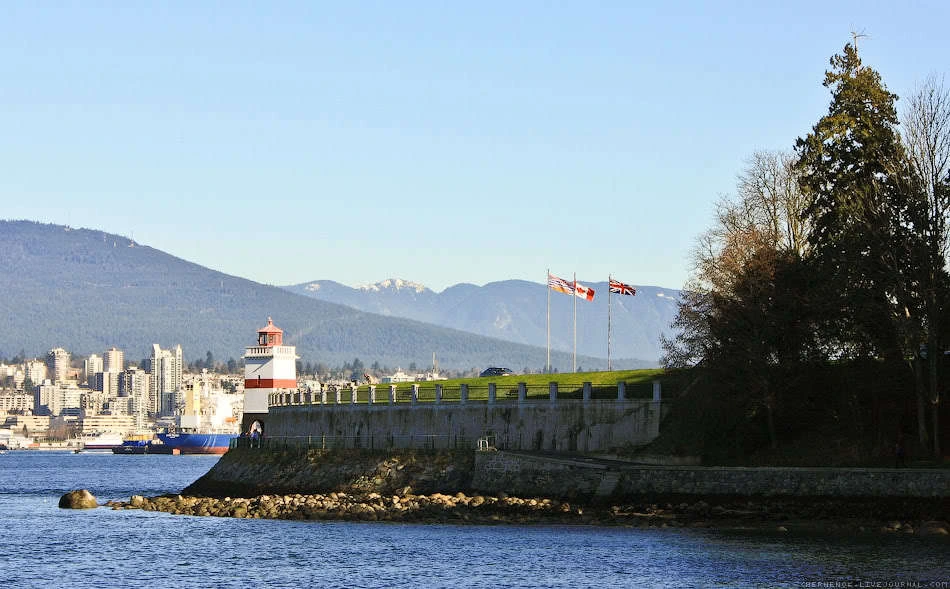
The port city - the largest in Canada and the most diversified, with a trade turnover of more than 75 billion. Canadian dollars per year. Port activity adds 10.5 billion US dollars of GDP and $ 22 billion in economic output.
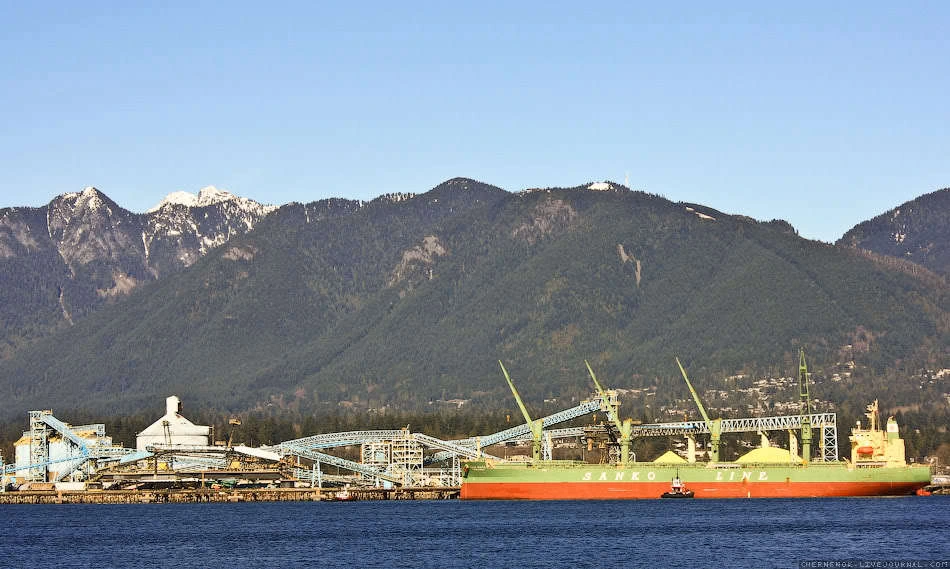
View of Vancouver from Stanley Park. A couple of words about Vancouver. Vancouver - a city on the west coast of Canada, the largest locality of British Columbia and the third largest in Canada. The population of the city itself - 600,000 people. (June 2006), but in the Greater Vancouver (Greater Vancouver), given the more than 20 suburbs, home to more than 2 million people.
The history of the city begins in winter 1824, when the Hudson's Bay Company established several Pacific outposts for the fur trade. A group of 40 people led by James MacMillan (James McMillan) chose the place in the valley of the Fraser River - the current district Langley (Langley) - where a few months began to build a fort. It was July 27, 1827 - that can be conventionally regarded as the founding date of the city. Fort Langley was engaged in fur trade (in 1832 it sold 2,000 beaver skins), and by 1840 it had become the largest exporter of fish (salted sturgeon) on the Pacific coast to the main market in Hawaii.
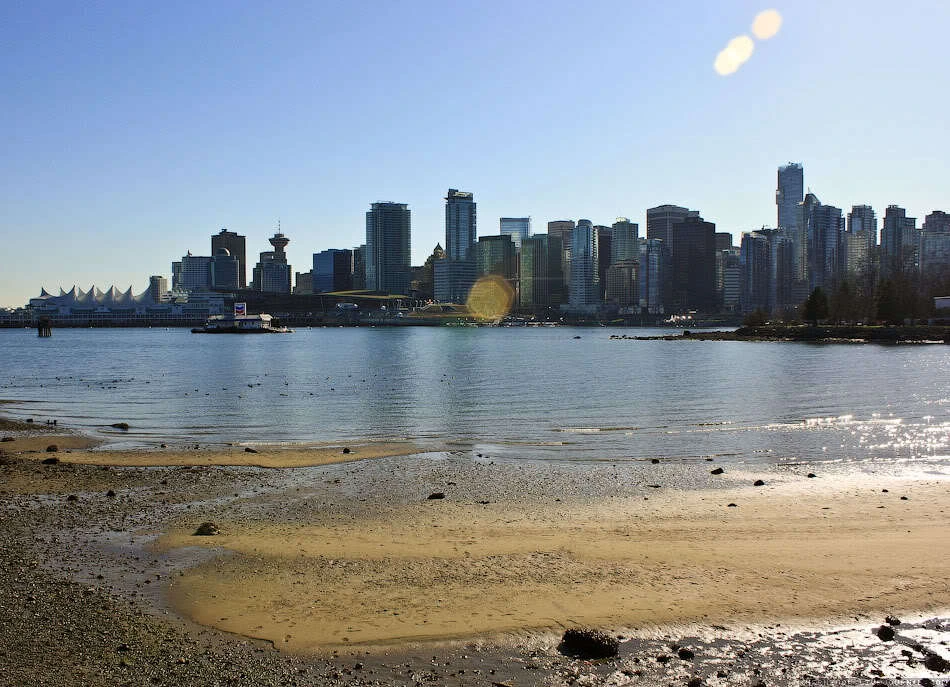
All the familiar Olympic rings! Five interlaced rings, which are depicted on the flag of the Olympic Games known as the Olympic rings. These rings are painted in blue, yellow, black, green and red, and intertwined with each other. They are a symbol of the Olympic Games. Olympic rings were designed by Pierre de Coubertin in 1912. Five rings represent the five continents: America, Europe, Asia, Africa and Oceania. The Americas are considered as a single continent, while Antarctica and the Arctic were not taken into account. Despite the absence of a specific color to a specific continent or region, various theories about the meaning of the colors of the Olympic rings tend to associate them with different quotes. For example, at least one of the five colors of the Olympic rings among present on the flag of each of the participating countries. Five Olympic rings were adopted in 1914 and debuted at the Olympic Games in Belgium in 1920.
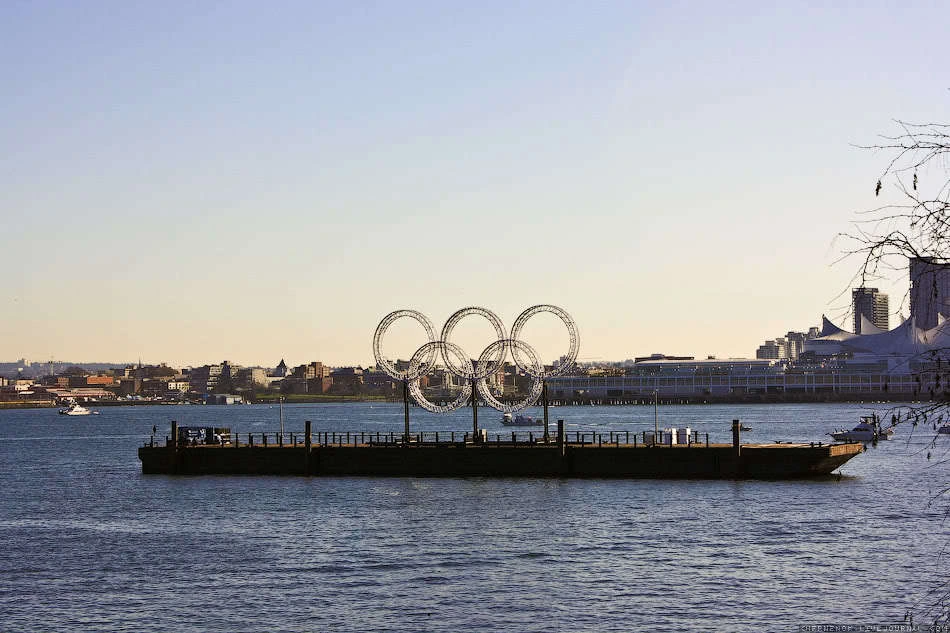
Advertising - the motor trade (not even think it would be desirable, as Samsung has given for such a stretch!)
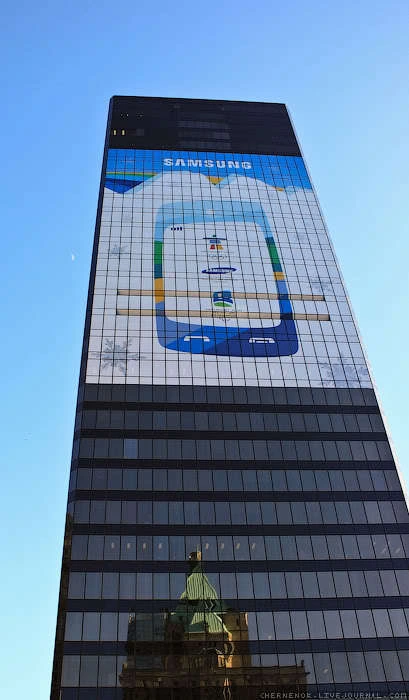
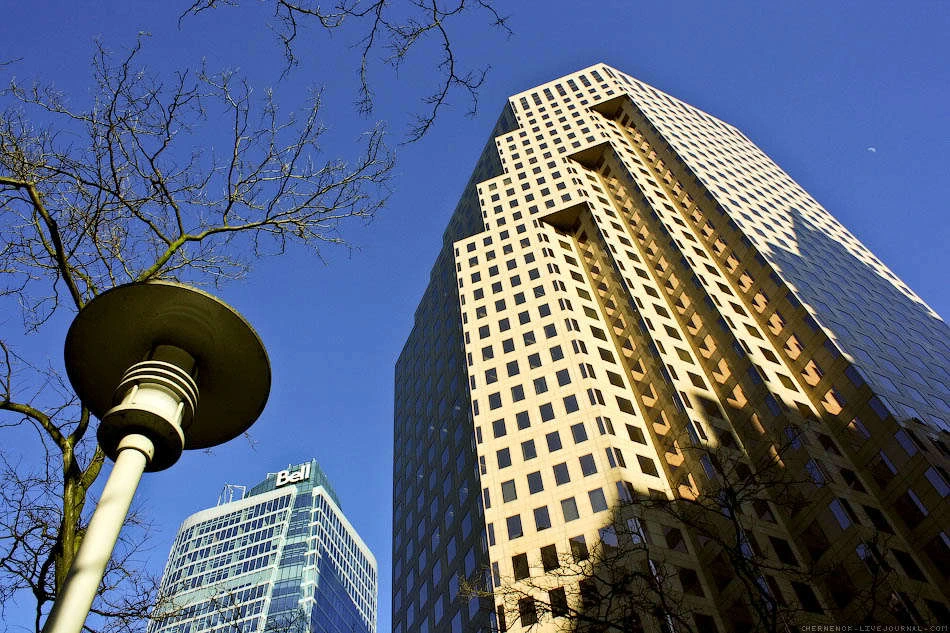
We decided to visit the Harbour Centre Tower: a high-speed glass elevator in seconds lifts on the outside wall of a skyscraper on a platform with a 360 °, where the weather is nice or offer an incomparable view of the great city, the bay Barrard, snow-capped peaks and glaciers North, Canadian and US islands in the south.
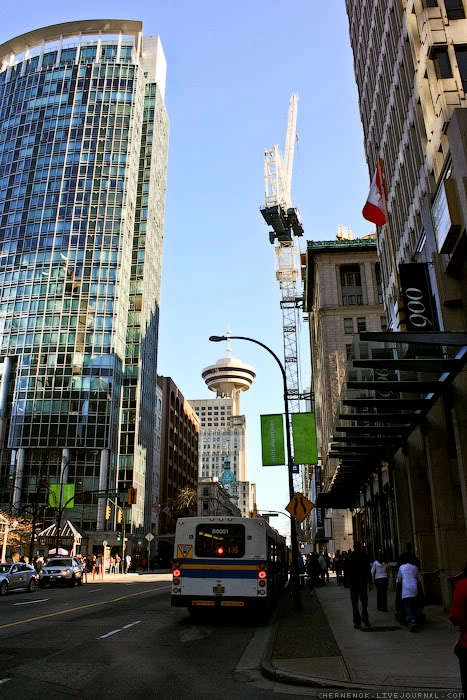
As always, I'm on the other side of the fence :)
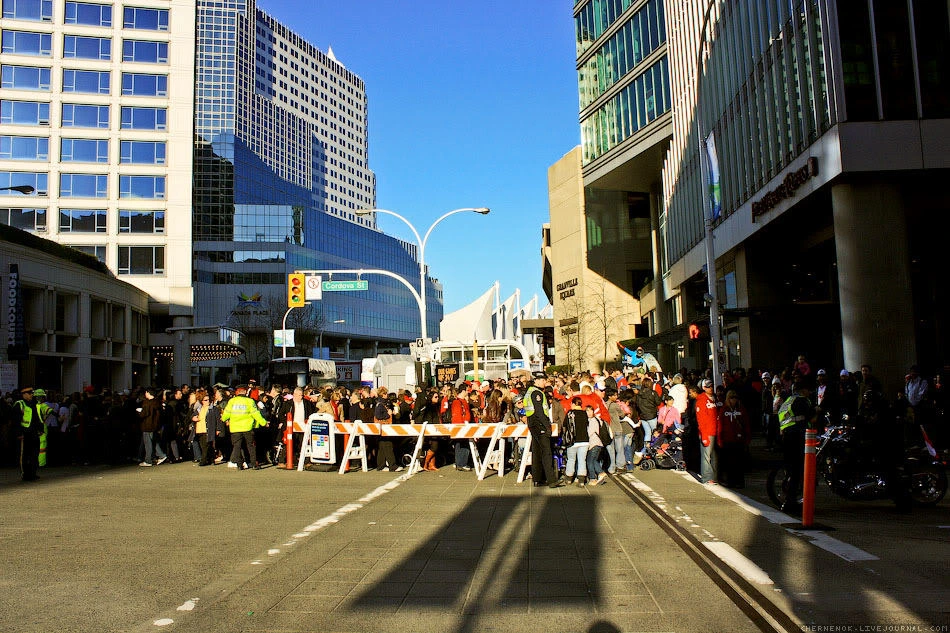
Here's a view opens from the Harbour Centre!
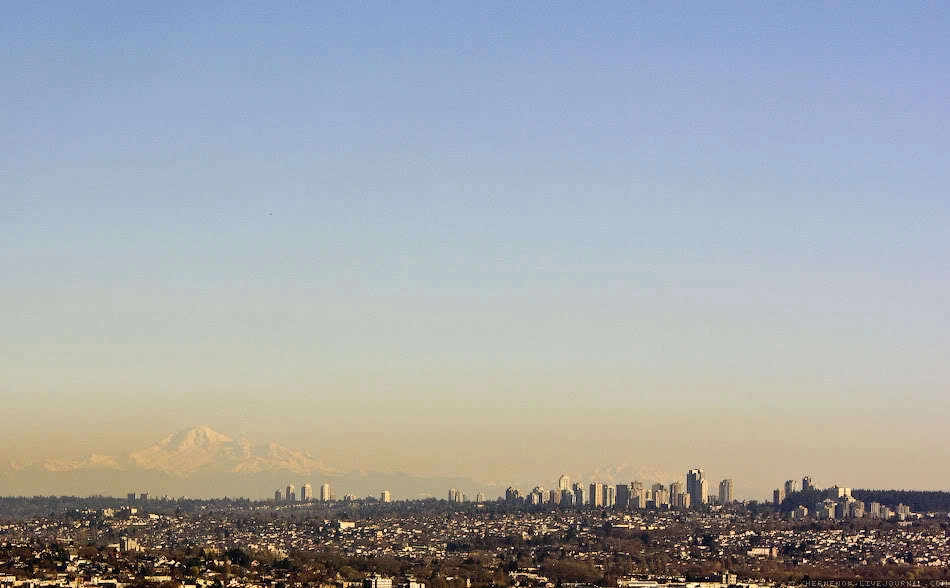
As I write this, we decided to visit the Harbour Centre. Harbour Centre (Harbour Center) - is a lookout tower, the tallest building in Vancouver! The view from the tower in the direction of Van Sity Seeds.
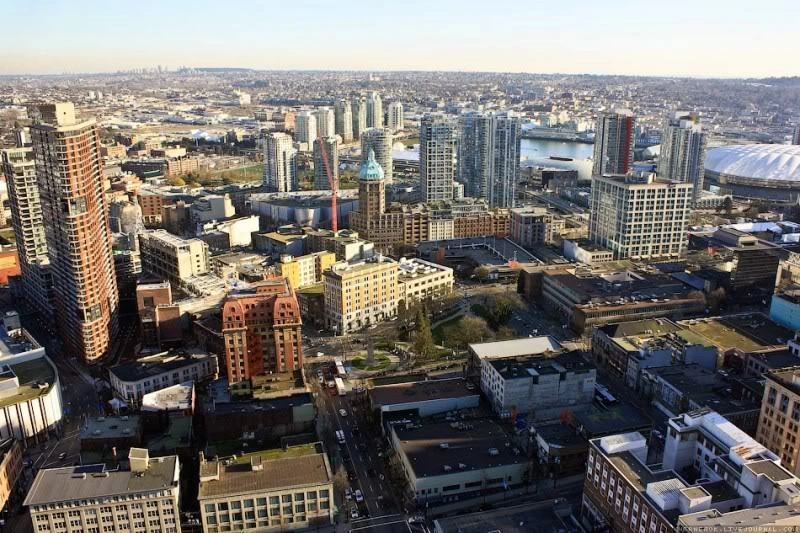
This is the view from the tower to the North Vancouver. On the left are the sails Canada Place (they were erected in 1984 as the Canada Pavilion for Expo 86). Well, and the tower, which is all you can see, was built in 1977 and opened her Neil Armstrong, the first man to walk on the moon. Its height is 177 m, and an observation deck with 360-degree all-round visibility is located at an altitude of 130 m. Inside the tower - 28 floors of office space.
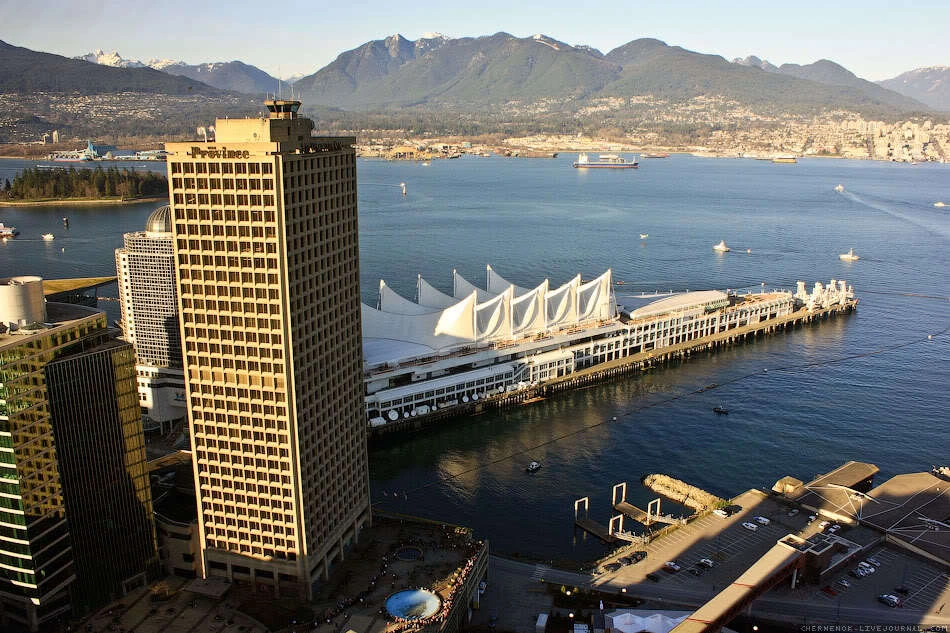
High-speed glass elevator, located on the outside of the tower, just 40 seconds to raise visitors to the review site. And here offers a unique, stunning beautiful view of the bay Berrard, the Pacific Ocean, on Vancouver Island, the bay and the city itself - with its high-rise buildings and small, with its parks and bridges.

Enjoy the view of Vancouver, we went for a walk around the city. One of the low places is Gestaun (Gastown). In 1867, the year of foundation of Canada, on the bay in a boat with a keg of whiskey and his wife, an Indian trader comes enterprising liquor John Deighton, who immediately gets the nickname Jack Chatterbox. Thirsty sawmill workers in one day cleared the forest and built a saloon, which was formed around the new town. So there Gestaun - the future heart of Vancouver, now a popular historic district. In 1870 it was renamed Gestaun in Granville.
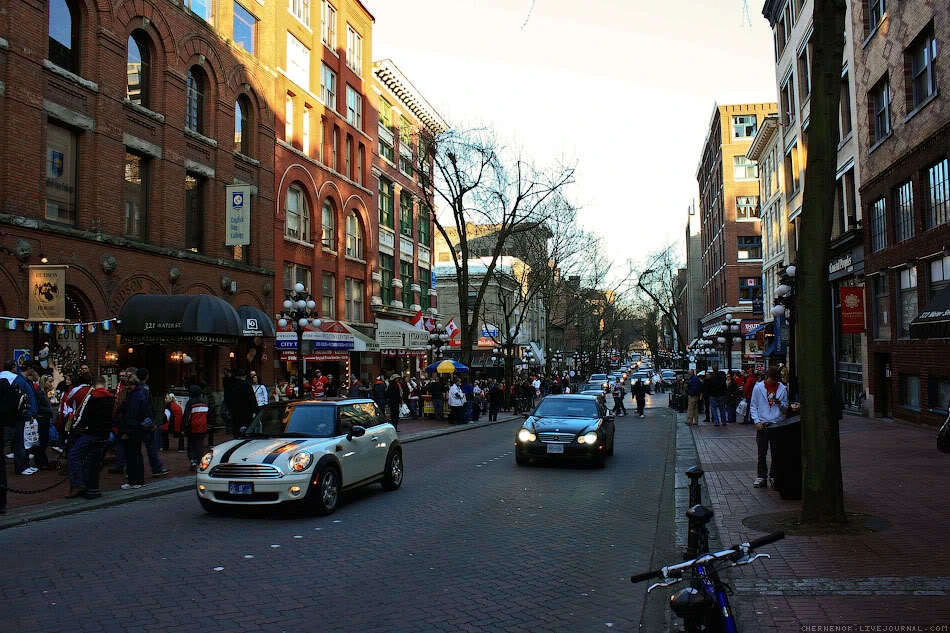
Gateway gateways are always :)
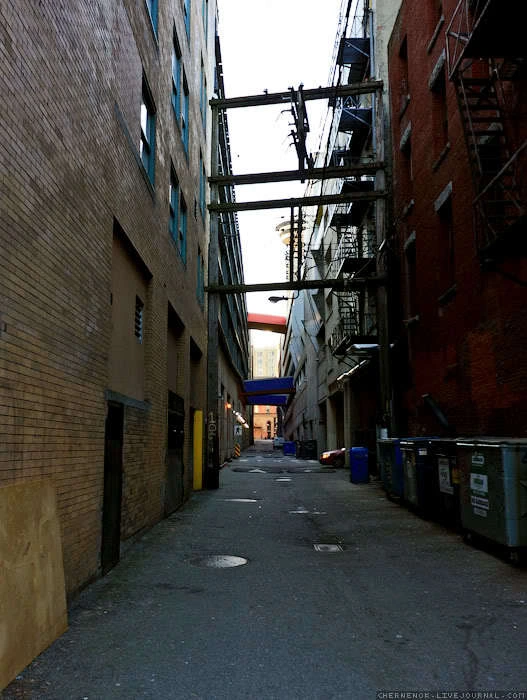
Just an interesting building on West Pender St.
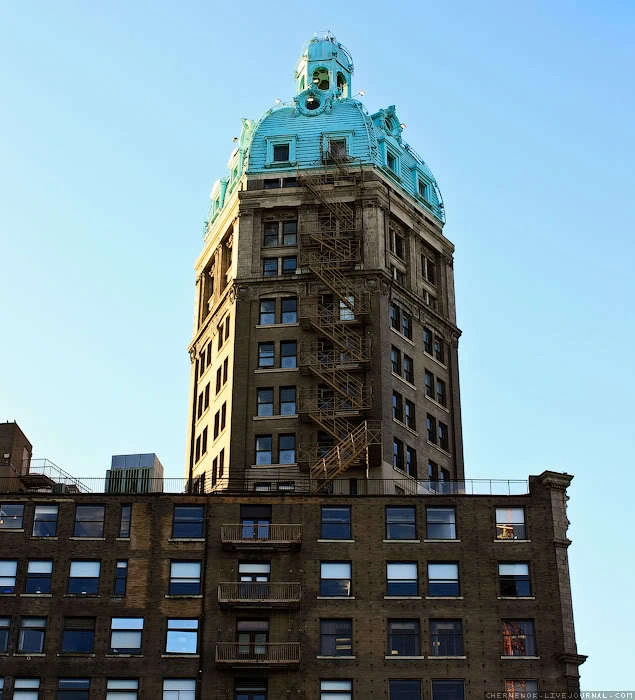
Bead Science World. It was a building of the Russian national team at the Olympic Games!
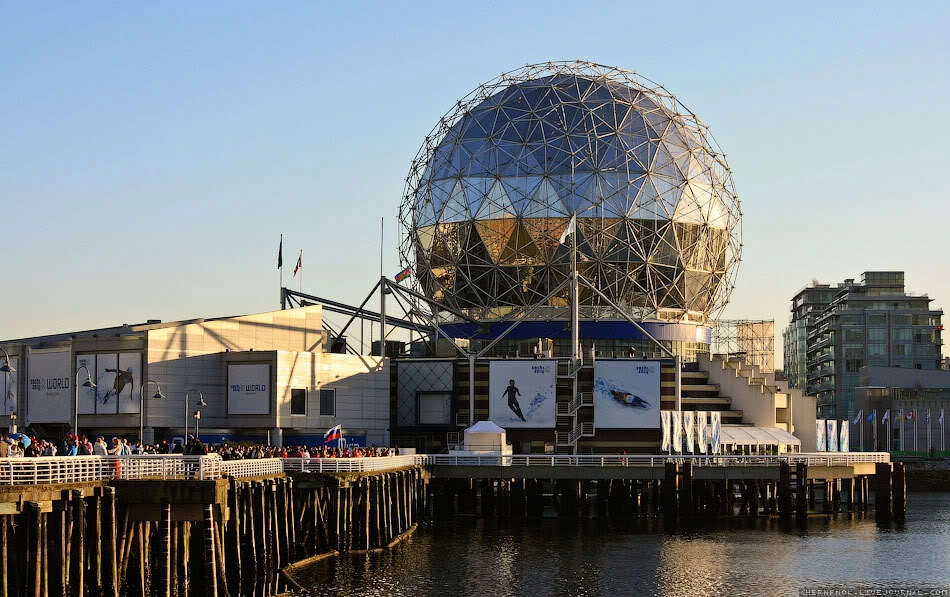
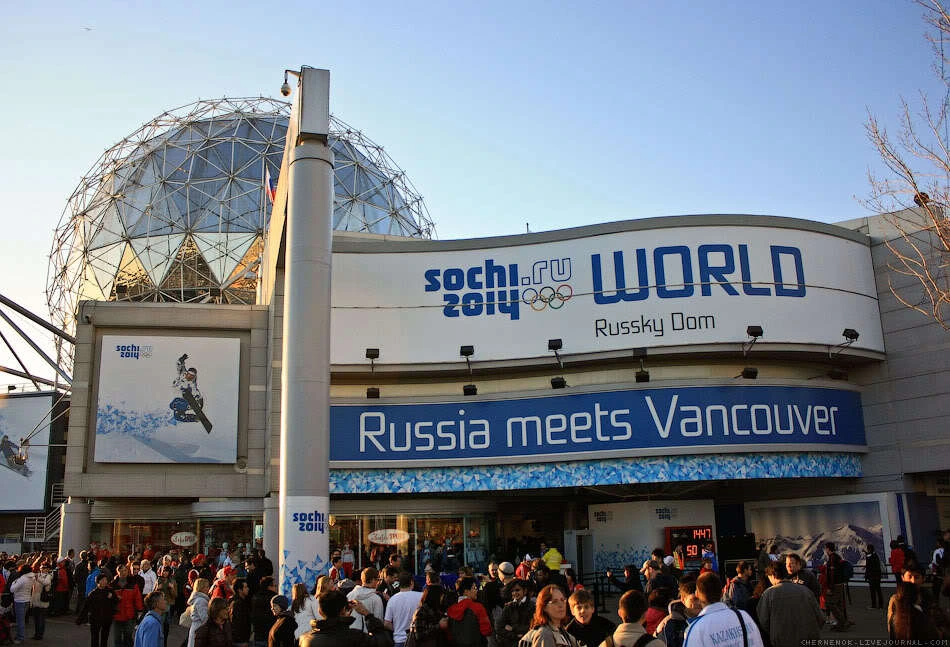
On the bay was full of such bashenek. In fact, it is a symbol of the Olympic Games held in Canada. This Inukshuk (Inukshuk) - construction of the stones resembling human silhouette. Inukshuk has a very ancient history. Inuit (Aboriginal living in northern Canada), these sculptures were in fact "road signs". They noted the important places (areas for hunting, storage products), as well as used as a guide, including navigation. In the language of the Inuit "inukshuk" - a substitute person (Inuk - man, Shook - substitute).
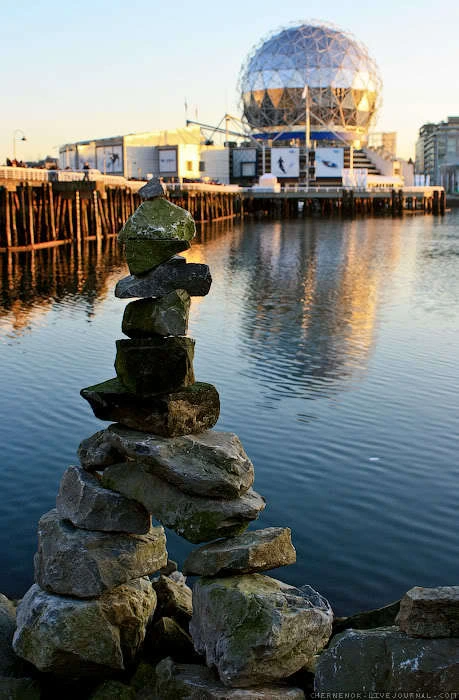
Imperceptibly evening came. Tower Harbour Centre.
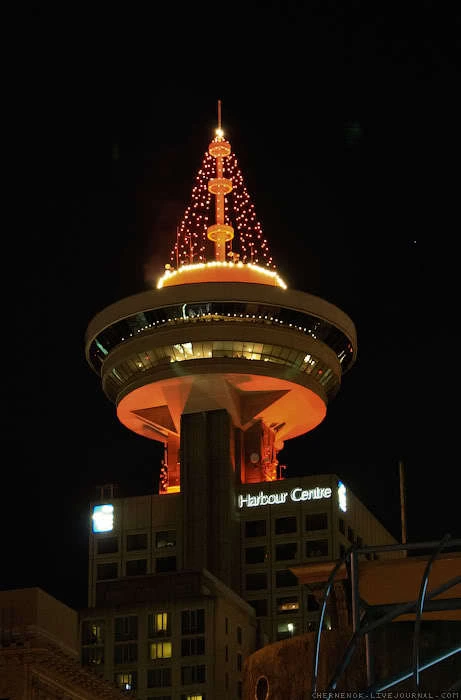
Canada Place. In Canada Place located corporate offices and cruise terminals Port Metro Vancouver, Vancouver Convention Centre East, at the Pan Pacifis, the World Trade Center.
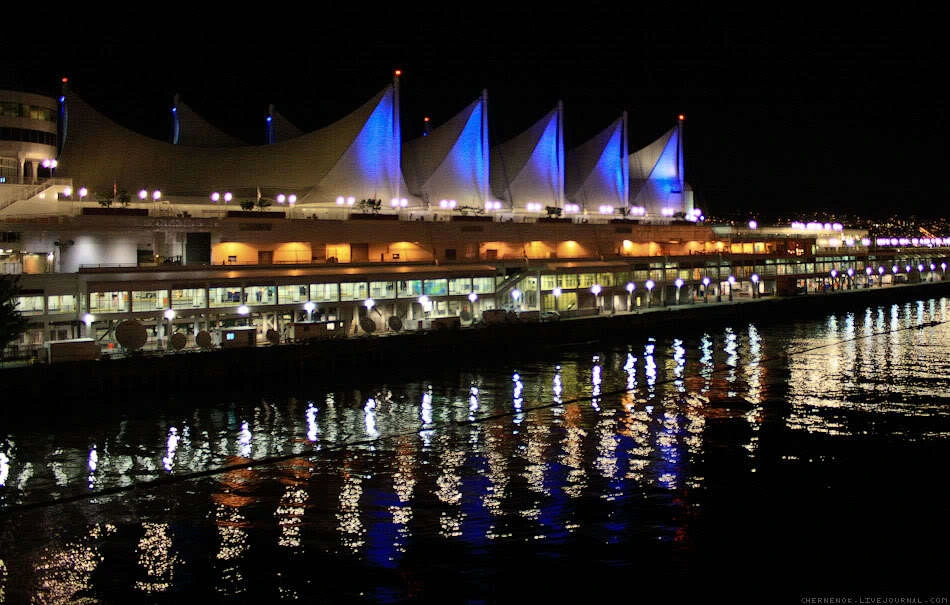
Bus, which we see these images mascots of the Olympic Games, "blinking", "Kuatchi" and "Sumi". They Canadians tried to merge, as the real inhabitants of the forests and oceans, as well as the popular mythological images. For example, in the figure "flashes" you can see the image of a killer whale (well, nothing Sochi dolphin), inhabiting the Pacific Ocean and at the same time bear in black and white, which, though rare, is found in the forests. "Kuatchi" - is "Saskatch" or "Bigfoot" from the deep forests (closest he seems like a no less mythical image of "Bigfoot"), and "Sumi" recalls mythological thunder-bird. It is important to note that the "Sumi" became the mascot of the Paralympic Games. All figures are derived from the epics Inuit people, who in ancient times lived in northern Canada. Three main mascot and was assistant Mukmuk figurine local groundhog.
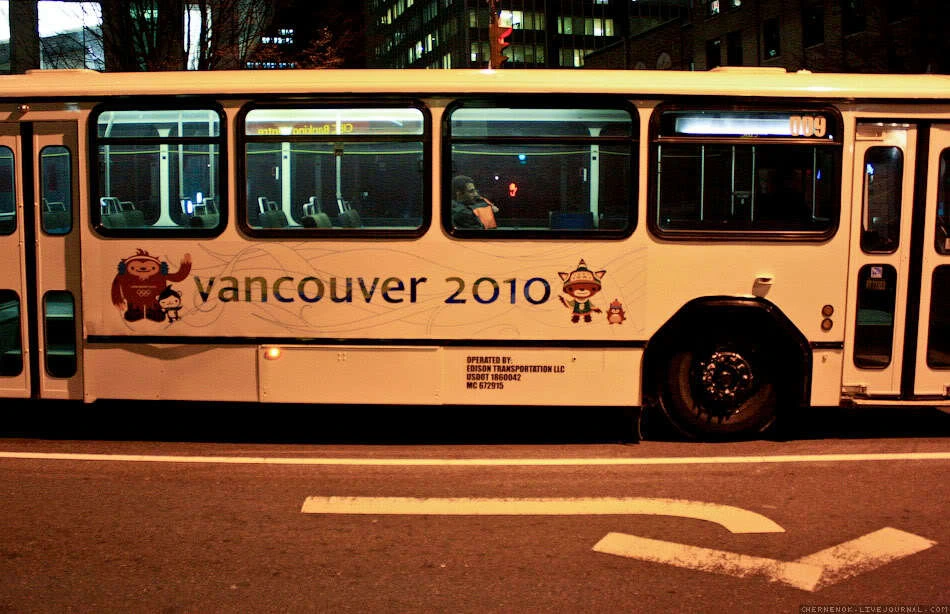
Well, in the heart of Vancouver was the Canadian Pavilion :) (at the usual time this building with columns - Museum of Art)
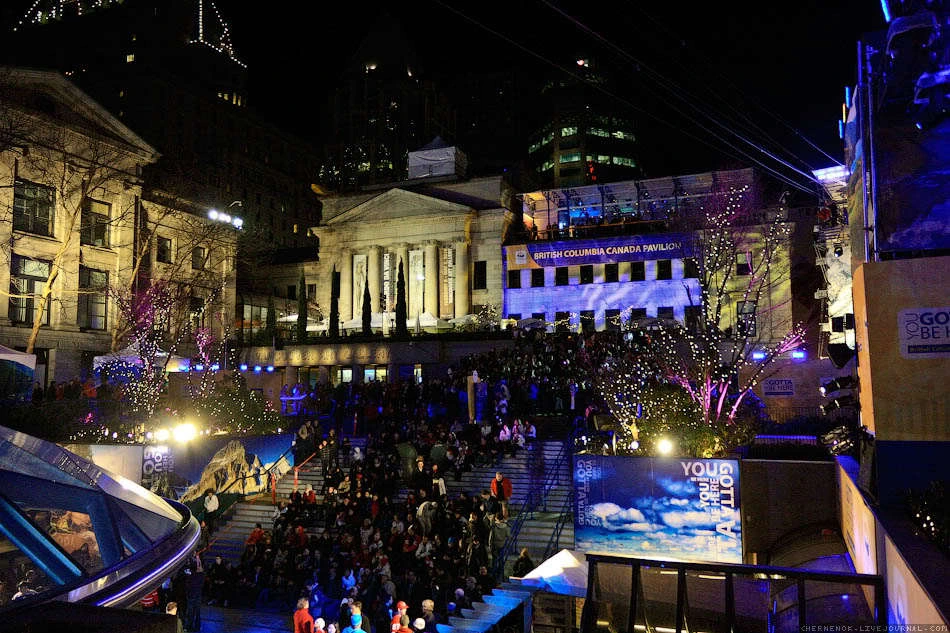
On the way back I turned the wrong way and ended up at the airport :) When leaving the airport was the symbolism of the Olympic Games! It would be interesting to see live to Moscow in his 80th year, during the Olympic Games!
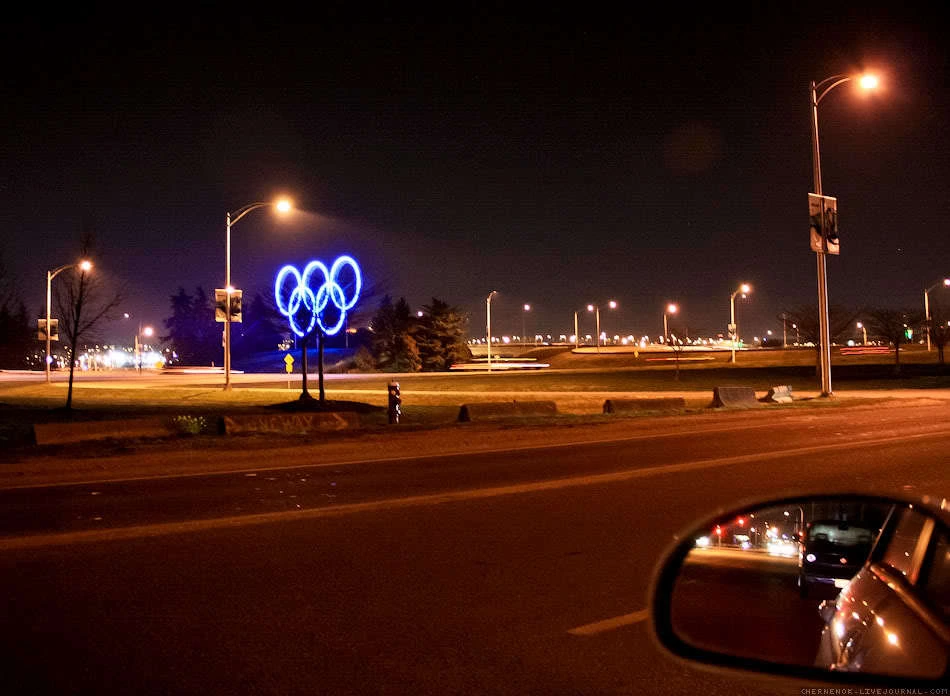
PS Well, for the sake of completeness we can say that in Vancouver in free drugs are used in special shelters under the supervision of doctors and nurses can drive yourself dose + large numbers of homeless people, drug addicts and / or prostitutes, trying to make a potion ...

